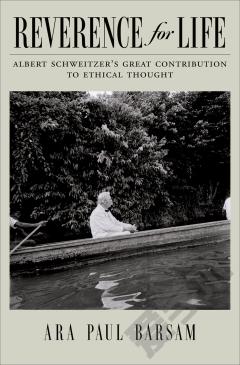Reverence for Life —— Albert Schweitzer's Great Contribution to Ethical Thought
----- 敬畏生命:伦理思想施韦策的伟大贡献
Albert Schweitzer maintained that the idea of "Reverence for Life" came upon him on the Ogowe River as an "unexpected discovery, like a revelation in the midst of intense thought." While Schweitzer made numerous significant contributions to an incredible diversity of fields - medicine, music, biblical studies, philosophy and theology - he regarded Reverence for Life as his greatest contribution and the one by which he most wanted to be remembered. Yet this concept has been the subject of a range of distortions and misunderstandings, both academic and popular. In this book, Ara Barsam provides a new interpretation of Schweitzer's reverence and shows how it emerged from his studies of German philosophy, Indian religions, and his biblical scholarship on Jesus and Paul. By throwing light on the origin and development of Schweitzer's thought, Barsam leads his readers to a closer appreciation of the contribution that reverence makes to current ethical issues. Whereas previous commentators have focused on "reverence for life" as a philosophical ethic located in that tradition, this book demonstrates that it is in fact Schweitzer's theology that provides the hitherto undiscerned foundation for his ethic. Even among those who herald Schweitzer as the one who brought "reverence" to Christianity, there exists a tendency to underemphasize how his thinking also developed from his pivotal encounter with Indian religions. As Barsam shows, it is impossible to grasp the nature and the significance of Barsam's contribution without addressing that link. Life-centered ethics - in the broadest sense - have continued to flourish, yet Schweitzer's pioneering contribution is often overlooked. Not only did he help establish the issue on the moral agenda, but, most significant, he also provided much sought after philosophical and theological foundations. Schweitzer emerges from this critical study of his life and thought as a remarkable individual who should rightfully be regarded as a moral giant of the twentieth-century.
{{comment.content}}








 京公网安备 11010802027623号
京公网安备 11010802027623号